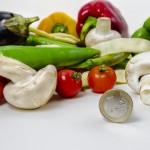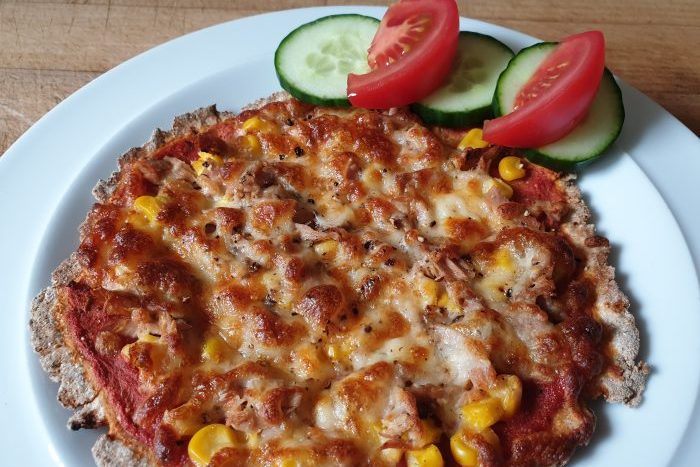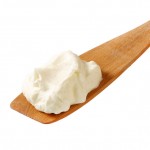This is the best pizza recipe for making with kids. Simple, quick, fun to make and tasty - all at the same time. Big thanks to our West Berkshire Community Support Worker, Lynn, for bringing this recipe to PhunkyFoods!
The nutrient profile of a home-made pizza is so much better than shop bought; lower in fat, salt and sugar. Pile high with vegetable toppings and enjoy.
Skills Check
Follow a recipe; follow food safety & hygiene rules; tidy away; mix to form a dough; knead; shape dough; use weighing scales; cut using bridge/claw technique safely; spread with a knife/spoon.
Equipment
Weighing scales, rolling pin, fork, bowl, spoon, baking sheet, stick blender or food processor
Allergens (Please note the allergens listed are indicative only. Allergens vary depending on brand; check the labels on the products you use)
Wheat | Gluten | Milk | Toppings
Ingredients (makes 2 individual pizzas):
- 140 g self-raising flour (or 70g wholemeal and
70g white self-raising flour mixed together) - 100 ml Greek yogurt
- 50 g canned tomatoes
- 1 tbsp tomato purée
- 1 pinch of oregano
- 50 g reduced fat mozzarella (grated)
- Toppings of your choice e.g. sliced tomatoes, mushrooms, peppers, courgettes, sweetcorn
Method
- Put the self-raising flour in a bowl and stir in the yogurt, first with a fork and then bring together to form a dough with your fingertips and knead lightly.
- Turn out the dough on a lightly floured surface and divide the dough into 4 pieces.
- Roll out each piece into a circle about 15 cm and place on a baking sheet.
- Blitz the tomatoes in a food processor or with a stick blender, then add the tomato purée and oregano.
- Spoon one dessert spoon of sauce onto the base and spread evenly.
- Top with a little mozzarella and then your chosen topping.
- Cook in a preheated oven at 220°C for 8-10 minutes.
So thinking about Lynn's Easiest Pizza Ever ...

Vegetables are so good for us! Low in fat, sugar and calories and high in vitamins and minerals. Add a range of different vegetables for your pizza toppings.
Mozzarella Cheese is lower in fat and salt than hard cheeses, but it should still be used sparingly to reduce fat and salt.
Nutritional Information
| - | Energy | 1642kJ/390kcal | 20% |
| Med | Fat | 10g | 14% |
| Med | Saturates | 6g | 30% |
| Low | Sugars | 5.5g | 6% |
| Med | Salt | 0.68g | 11% |
per 88g serving (excluding additional toppings)
% of an adult's reference intake
Typical values per 100g: Energy 972KJ / 231kcal
Notes
A traffic light system is used on nutrition labels to make it easier to see which foods and drinks are lower in calories, fat, sugar and salt. Try and choose more ‘greens’ and ‘ambers’ and fewer ‘reds’, and stick to smaller portions of ‘reds’.
Just because a recipe or a food has a red traffic light doesn't mean you shouldn't eat it. Understanding why a food or recipe might have a red light can be helpful. For example oily fish is high in total fat and so any recipe containing oily fish is likely to be ‘red’ for fat. But it is recommended that we eat oily fish at least once a week because the type of fat it contains is beneficial for our health.
% Reference Intakes are also shown. Reference Intakes are guidelines about the approximate amount of particular nutrients and energy required for a healthy diet (based on an average-sized woman doing an average amount of physical activity). Most children will require less than these Reference Intakes. The contribution of one serving of a food or drink to the Reference Intake for each nutrient is expressed as a percentage.




